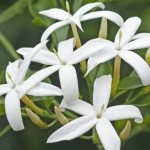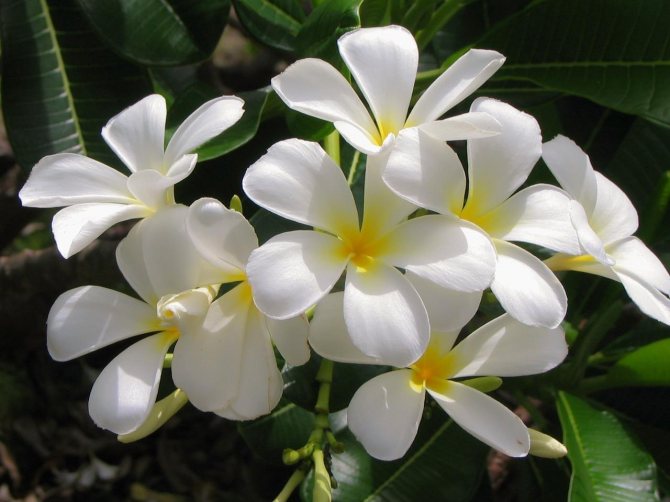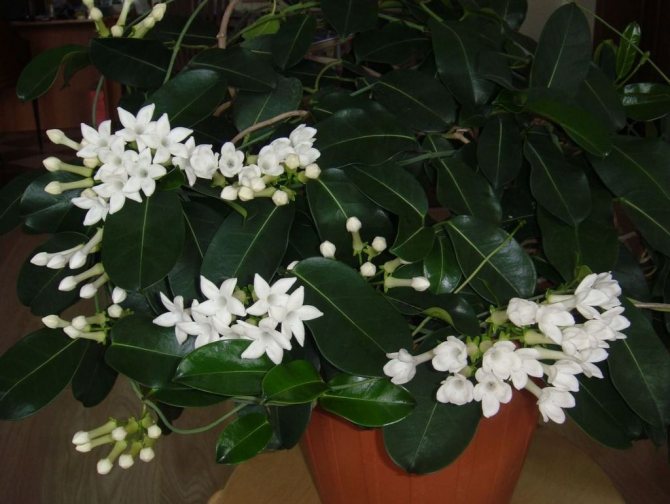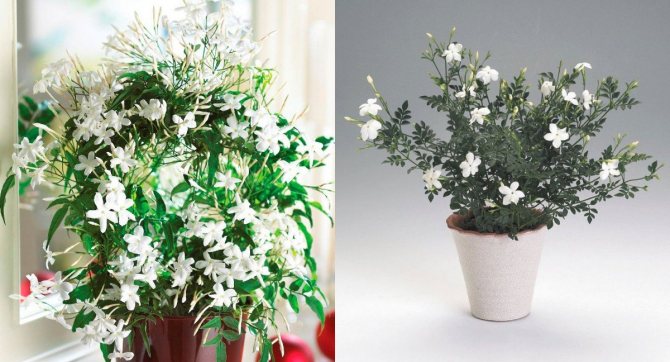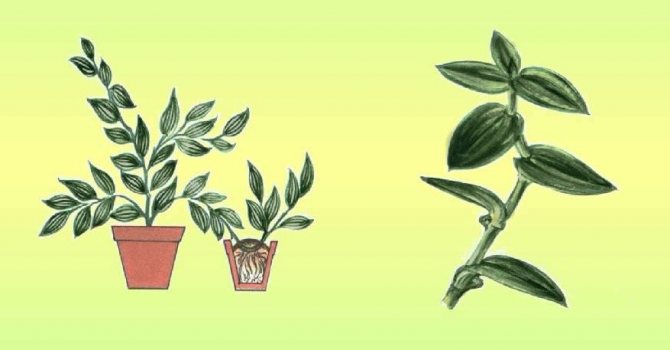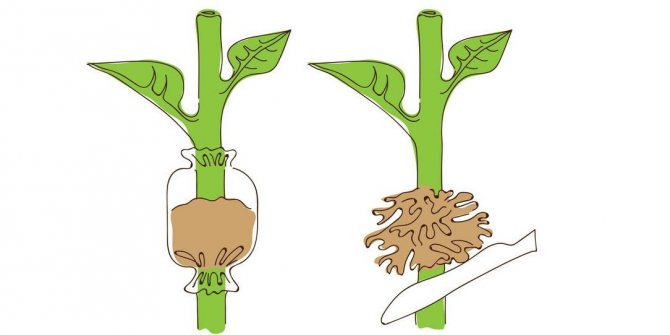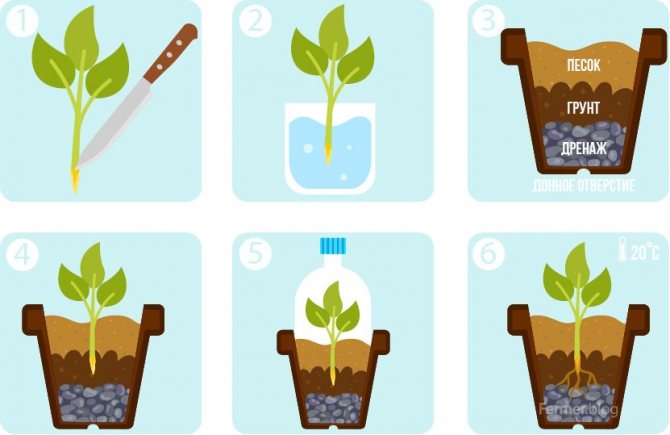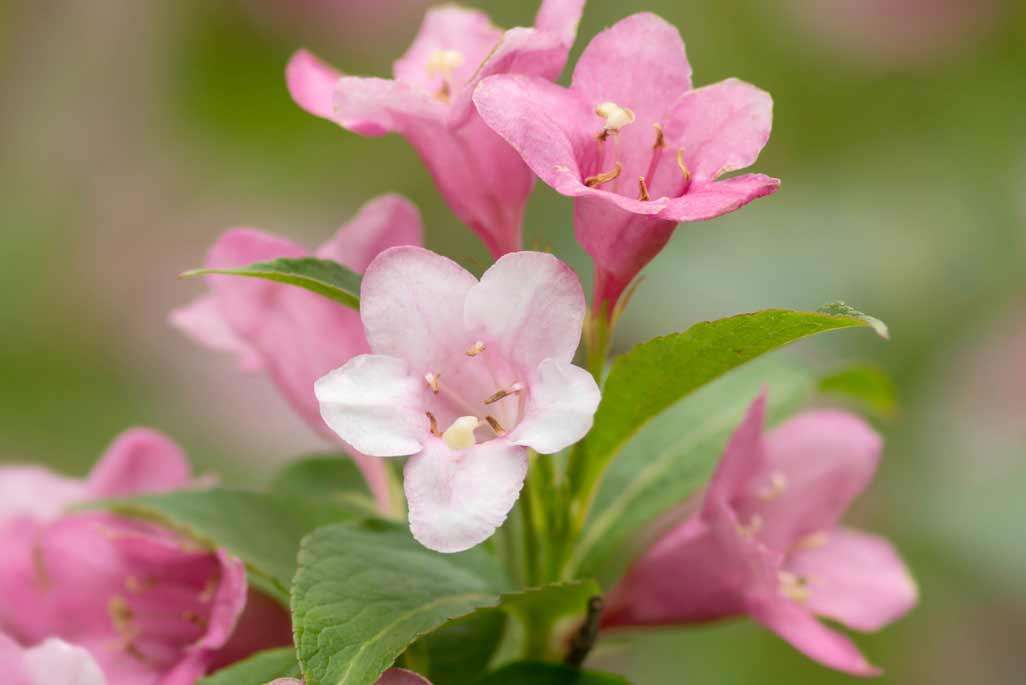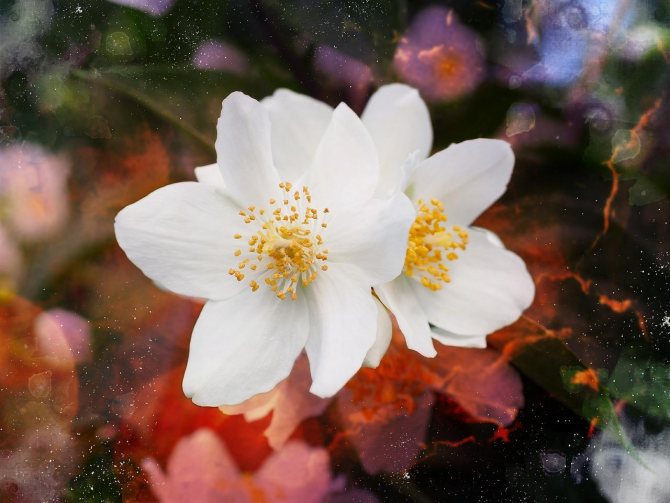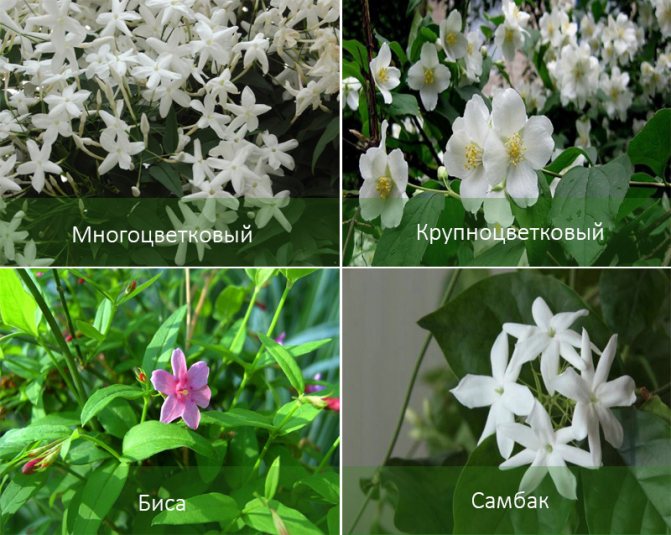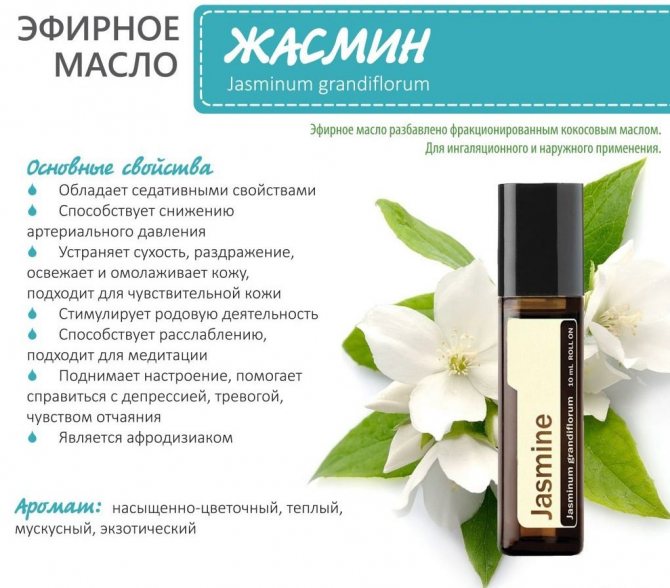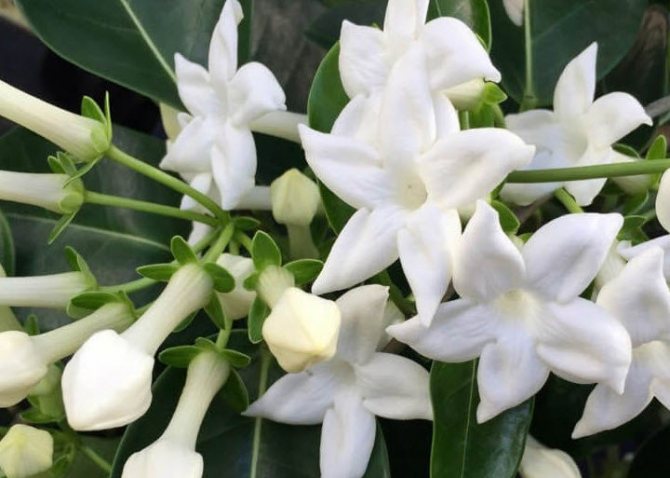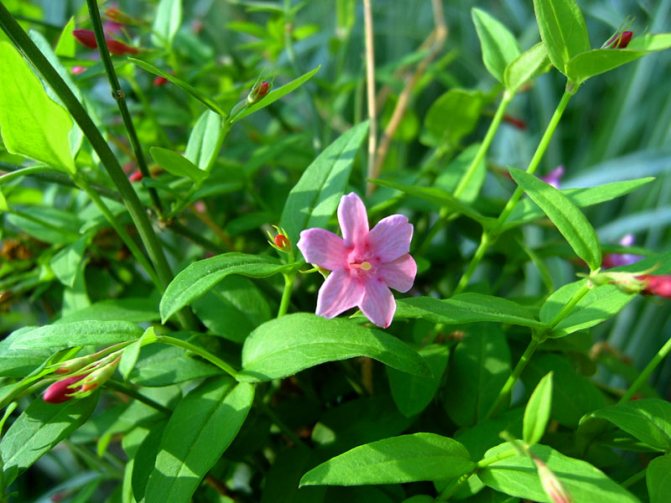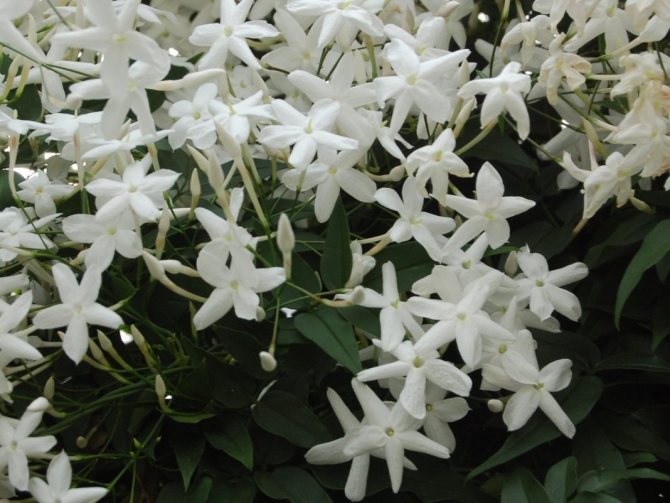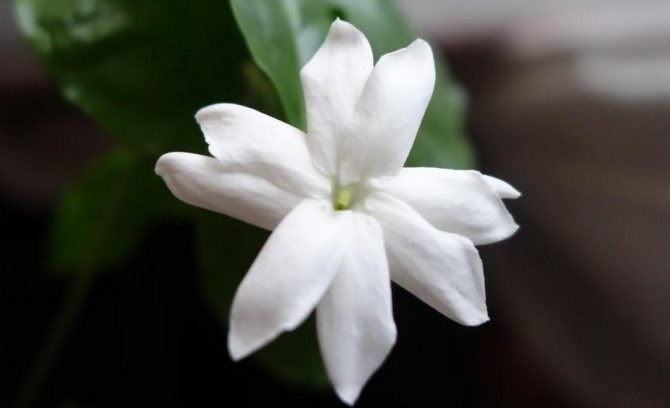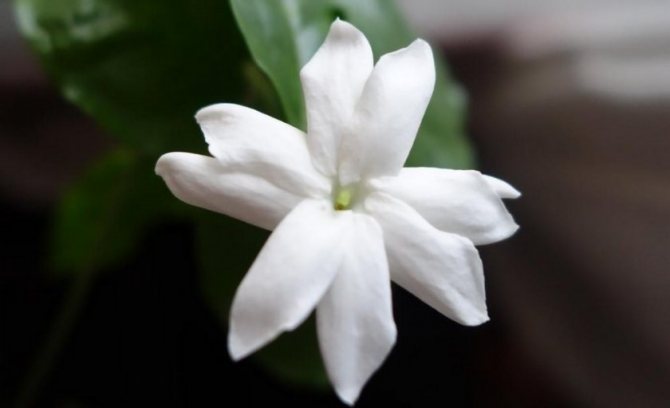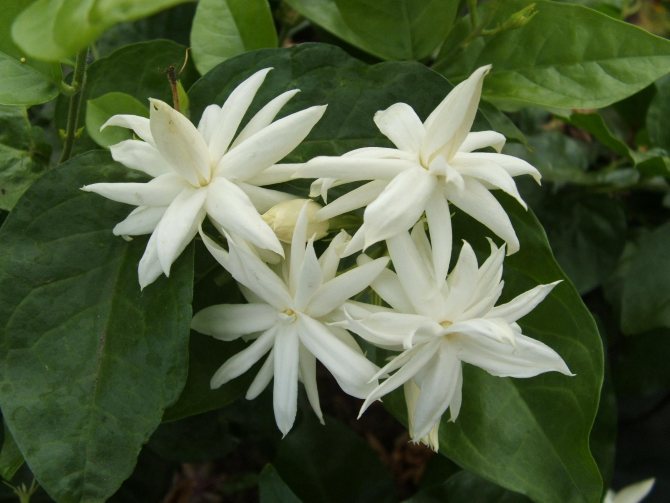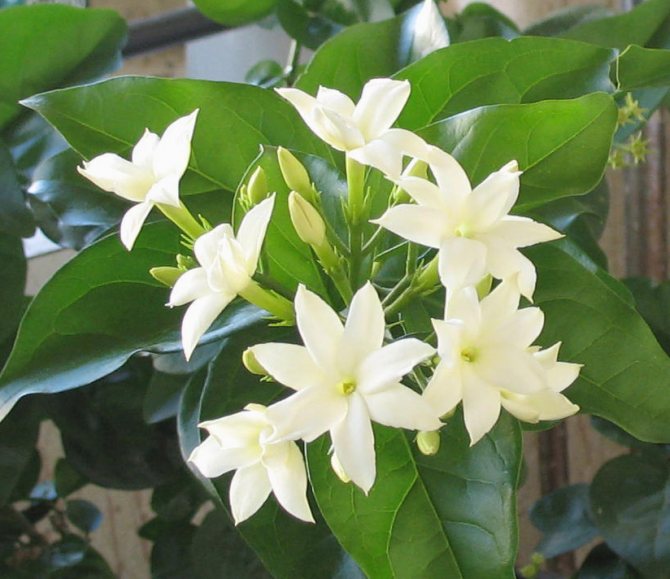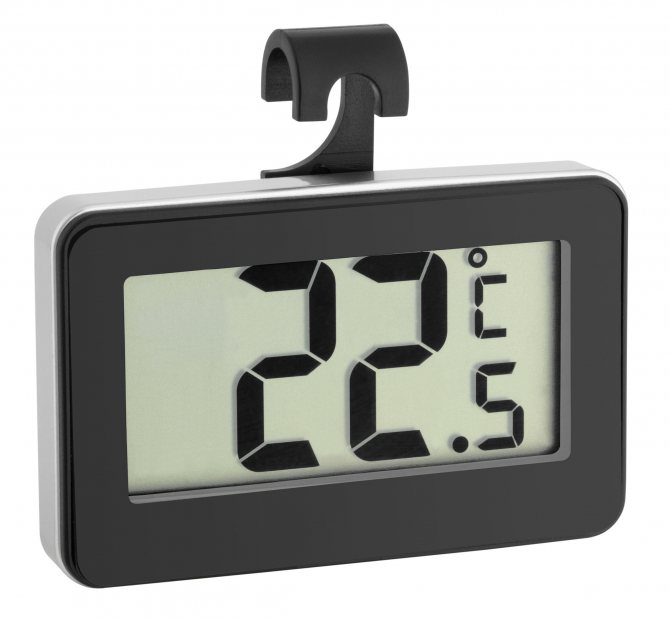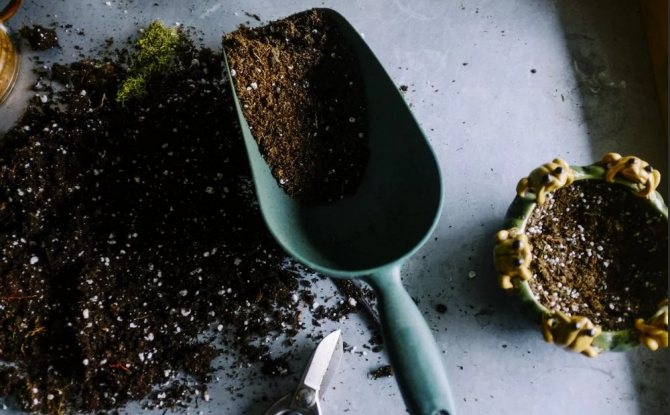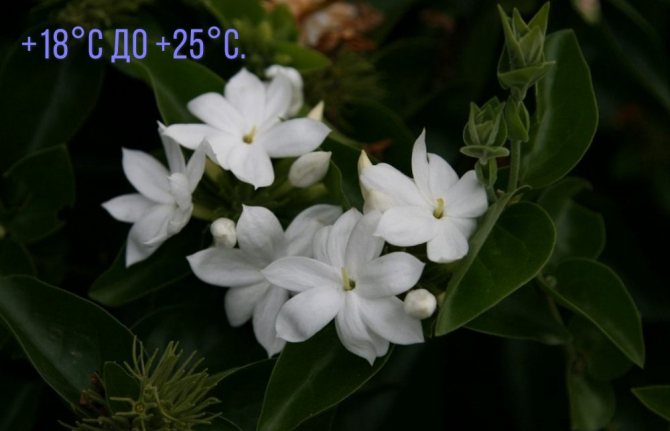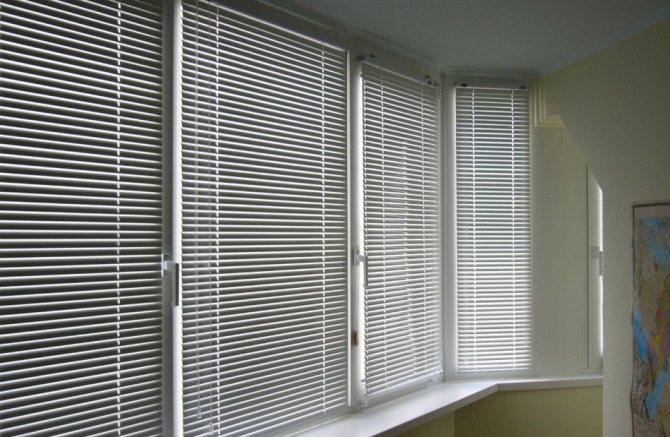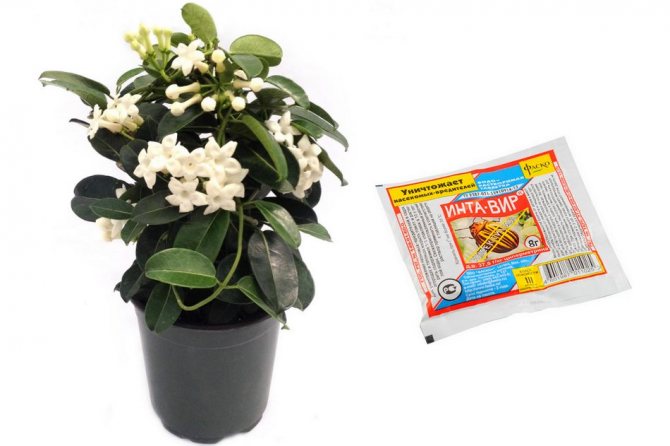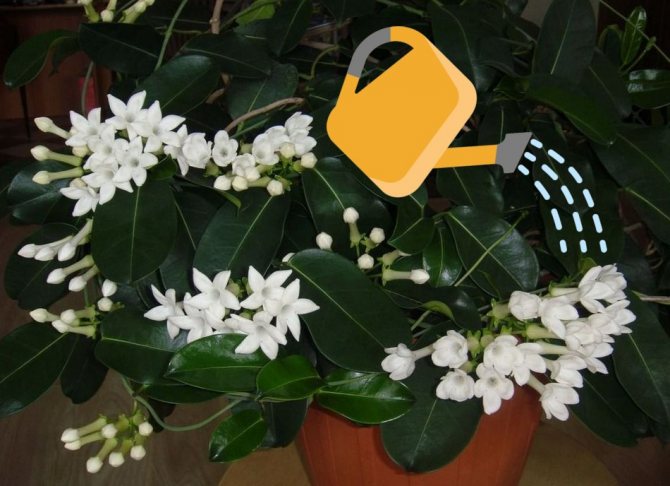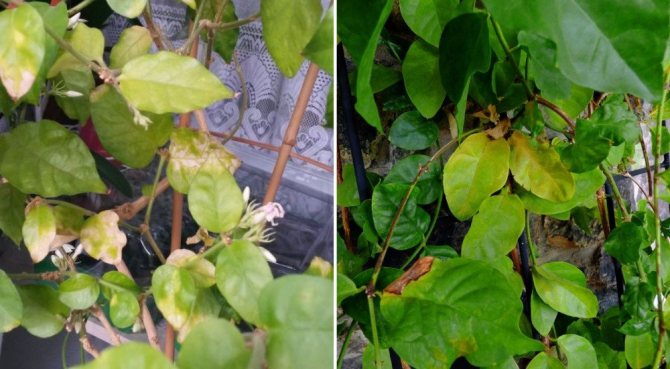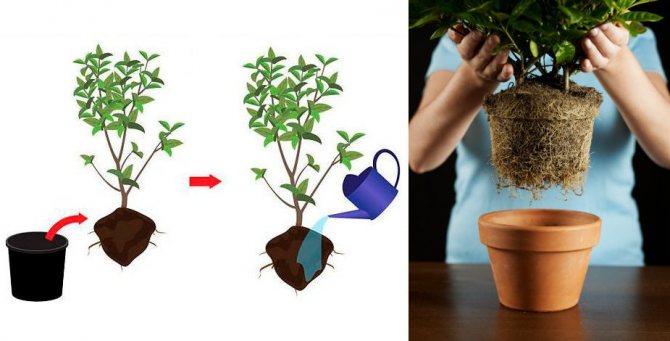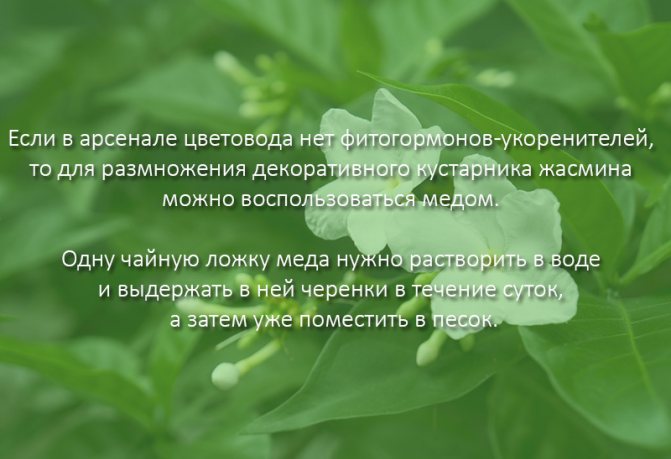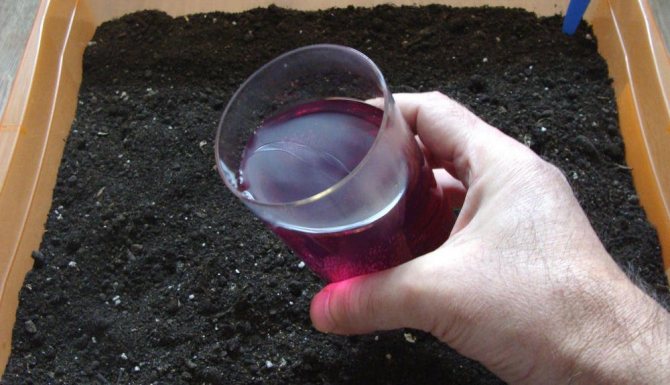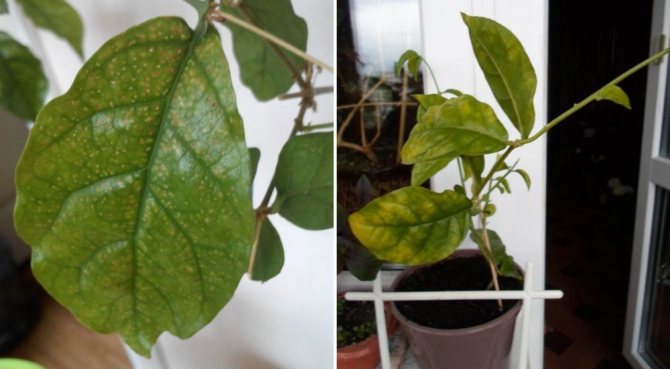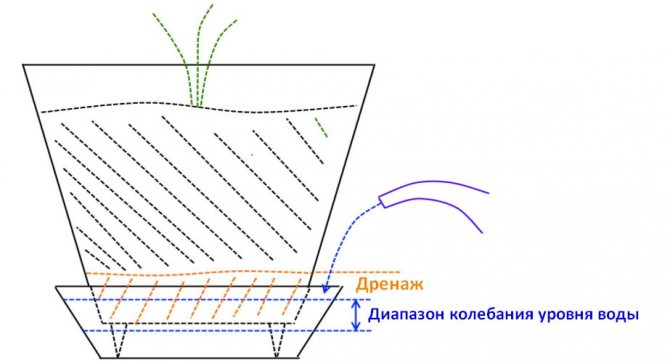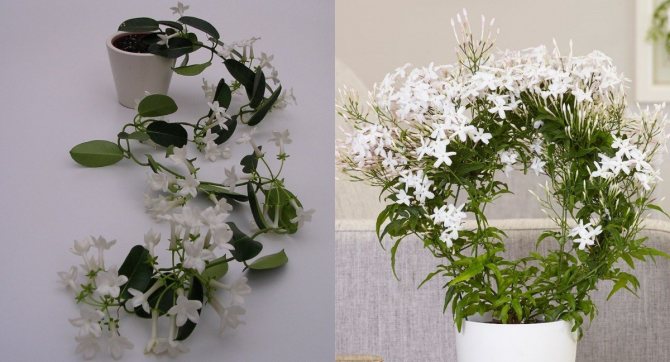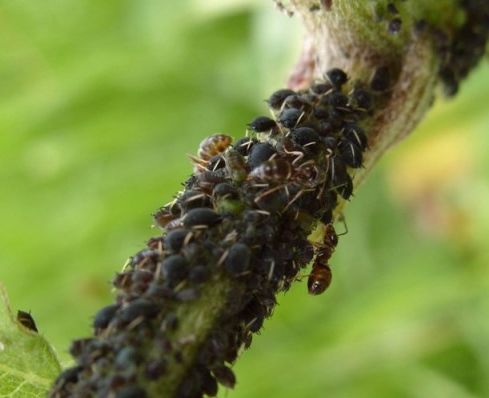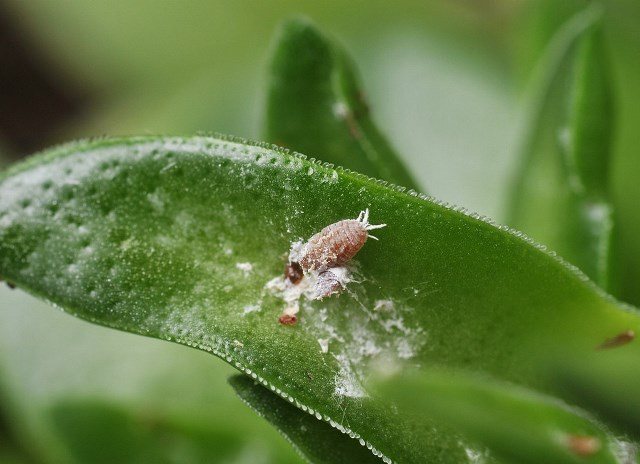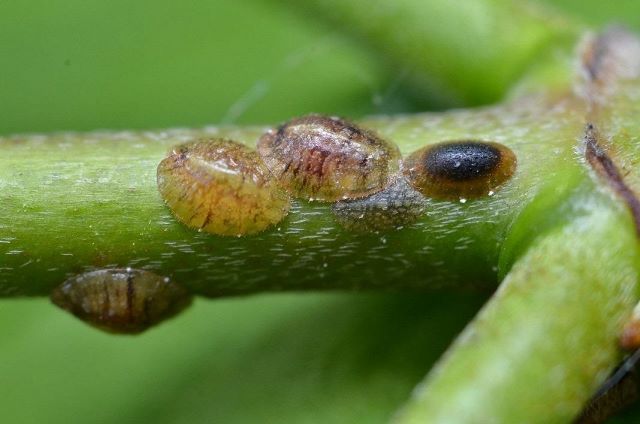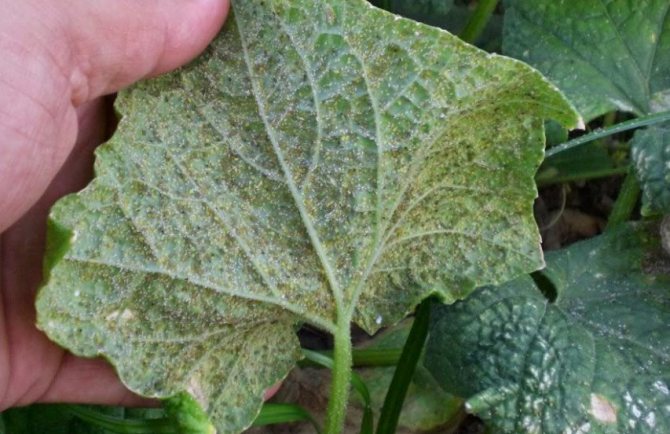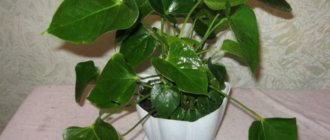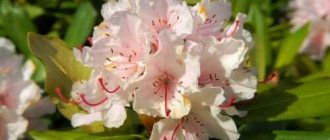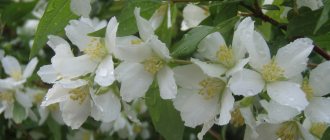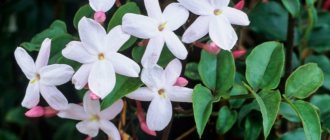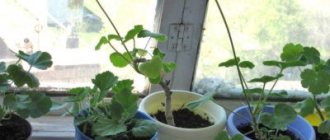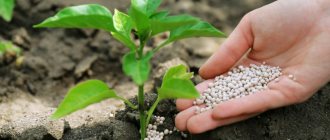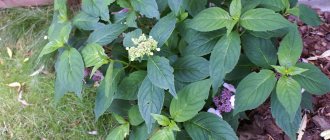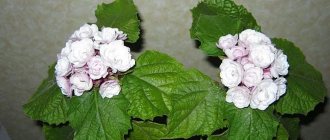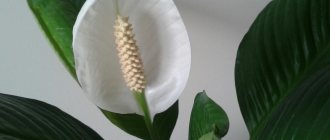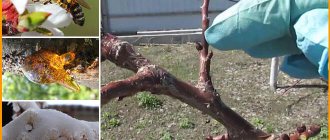Jasmine (Latin name - Jasminum) - a favorite garden shrub and home plant from the olive family. Before starting to grow it, we suggest that you familiarize yourself with a number of questions: what are the varieties of flowering jasmine; when and how much jasmine blooms; what are the requirements for care; what diseases is susceptible to; why does not it bloom. Having learned all about jasmine, feel free to start planting.
Jasmine: description
Jasmine is an evergreen shrub with curly stems and lush, fragrant flowers of white, pink or yellowish color. The shrub blooms, starting from 2 years of age. The shrub grows very quickly, reaching a height of over 10 meters, therefore, periodically it is necessary to carry out anti-aging and formative pruning.
Subject to all the rules in the care, the stems of the plant, starting from the bottom, are covered with wood. Therefore, jasmine is often used as a garden decoration, which blooms every year and is quite unpretentious.
Many gardeners make the mistake of calling jasmine chubushnik. These plants are similar, but also have a number of differences.
Chubushnik is characterized by:
- Prolonged flowering in summer - up to 50 days.
- The color is completely white. Pink blotches at the base of the petals are found in only a few varieties.
- Chubushnik blooms profusely, flowers almost completely cover the bush.
- Strong aroma. Some varieties exude a pineapple or strawberry smell.
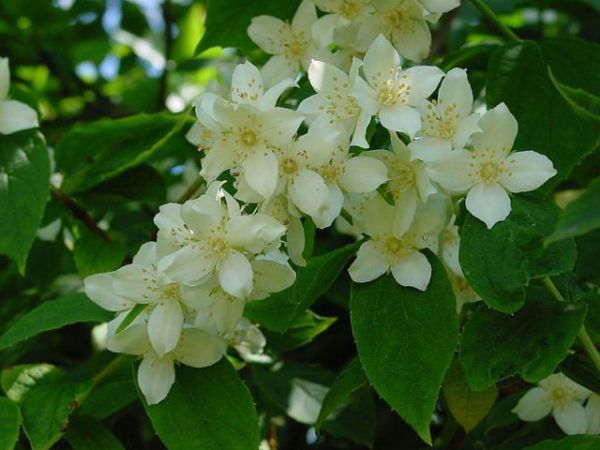
Chubushnik
Humidity
Jasmine does not require too humid air and grows well in the usual conditions of a city apartment. But if the temperature is too high in summer, it needs to be sprayed daily. A regular water spray is suitable for this.
In winter, if the plant is kept cool, it is harmful to increase the humidity of the air for it.
But if you keep jasmine at room temperature in winter, you can spray it 2-3 times a week, since when the heating is running, the air in the rooms is usually very dry.
Dry air is very destructive for jasmine. In such conditions, it grows poorly, practically does not bloom and often suffers from various pests and diseases.
Taking action to increase humidity is especially important during hot summers and warm winters. Here are some of the possible ways:
- Spraying;
- Place the jasmine pot in a tray with wet sphagnum moss, pebbles or expanded clay so that the bottom does not touch the water;
- Use a humidifier;
- Place a damp cloth on the radiators during the heating season.
Types and varieties of jasmine
There are about 200 types of jasmine and 90 of them are considered indoor plants. The species are distinguished by the color of flowers and leaves.
The most popular are the following varieties:
- Large-flowered jasmine. It is considered the least demanding of all. It behaves well and blooms at home. It grows up to 10 meters in height. The flowers are large, the leaves are small. In the southern regions of Russia, it is grown outdoors.
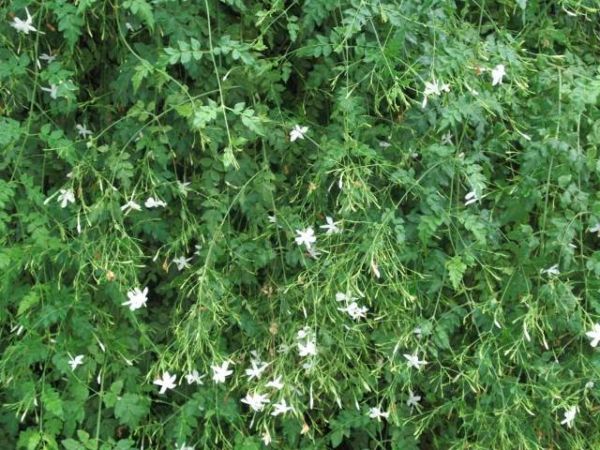

- Jasmine is multiflorous. Climbing houseplant. It blooms with small white stars. Frequent pruning of the stems is necessary, especially after flowering. The shrub is photophilous and picky about moisture.
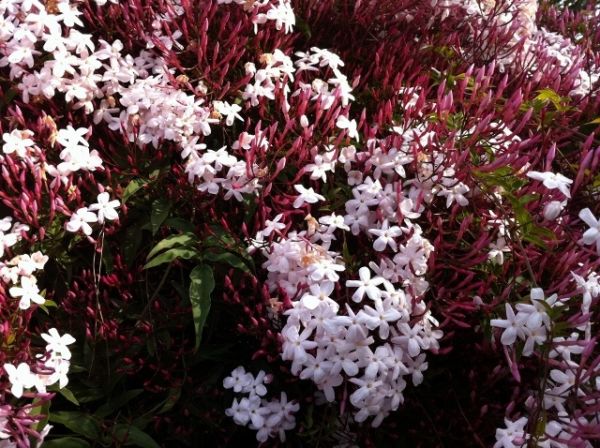

- Holoflower jasmine. Creeping shrub. Blossoms preferably in winter, after foliage has fallen. Flowers are yellow. During the flowering period, the plant is very sensitive to temperature extremes.Unpretentious, well-behaved in the shade variety. Grown all over Russia. Blooms in large yellow flowers.
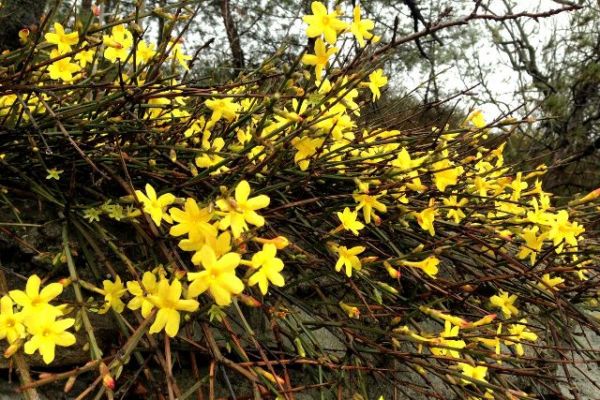

- Madagascar Jasmine (Stefanotis). Due to its delicate inflorescences, it is often used in floristry. The plant variety blooms only at home. The sap of the plant in contact with the skin causes irritation. It is planted outdoors only in the southern regions of Russia.
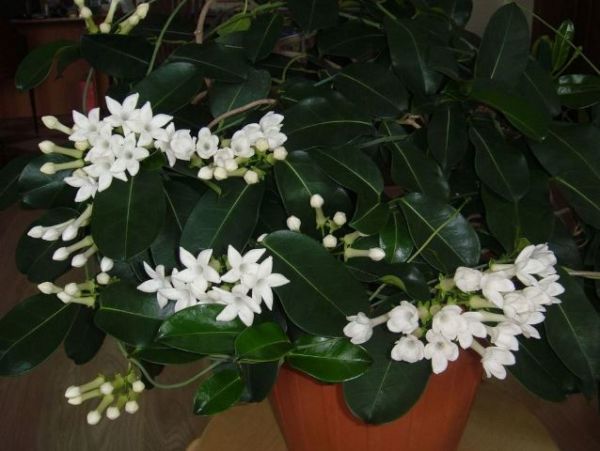

- Jasmine sambac. Tropical variety. It has long and flexible shoots. It does not take root in temperate climates. The white and double flowers of the plant are used to make teas.
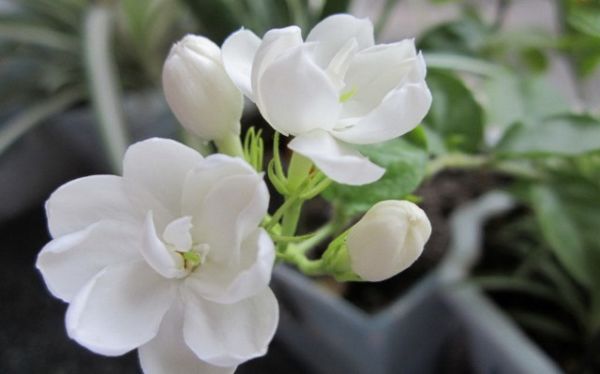

- Terry Minnesota Snowflake. A popular garden variety of jasmine. Famous for the fact that it blooms with lush double flowers, the aroma is delicate and sweet. The diameter of the flowers reaches 2.5 cm. The shrub grows up to one and a half meters in height.
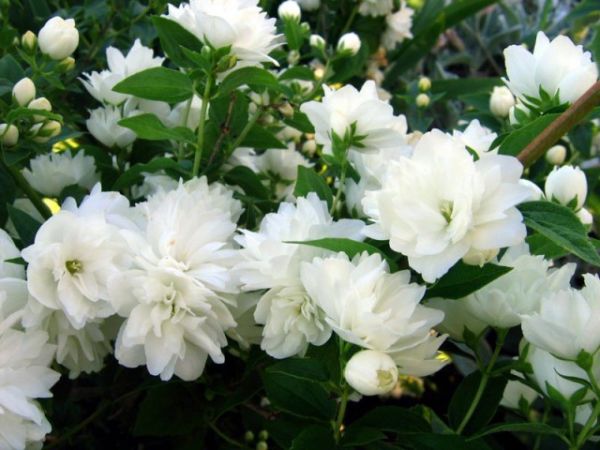

- Starbright. It is unpretentious to soils, perfectly tolerates cold and undemanding to care for. Blooms preferably in the sun. The stem and cup are purple. The flowers are large and snow-white.
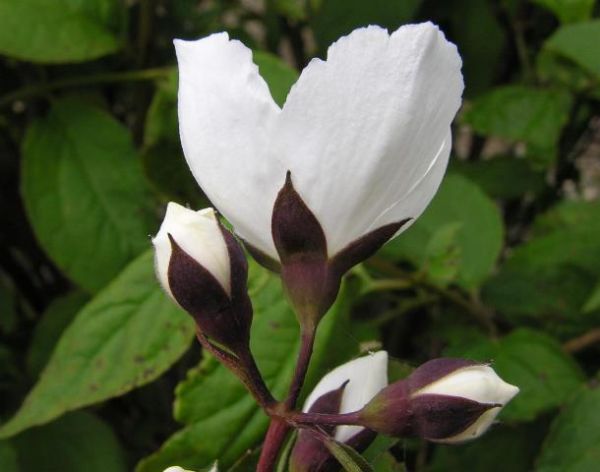

What are the types
There are several varieties of indoor jasmine, and here are the most famous ones:
- Jasmine multiflorous... It is a highly branched shrub up to 2 m high. Its leaves are dark green, oval, with a pointed edge. There are many flowers, they form loose inflorescences on top of the shoots. The flowers are tubular and five-lobed. The buds are pink, and when they bloom, they turn white. The smell of this species is very strong, it is noticeable even from a distance. Flowering lasts from February to August.
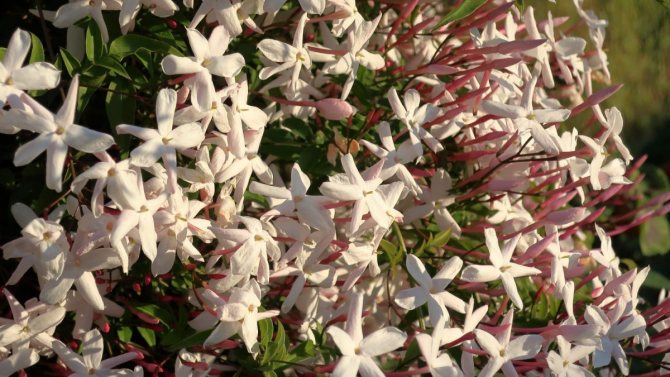

- Jasmine finest - a kind of multi-flowered. This species is represented by bushes with downward shoots. Its leaves are heart-shaped, below it is slightly pubescent and lighter than above, it has white flowers with 8 petals. This variety blooms from January to March.
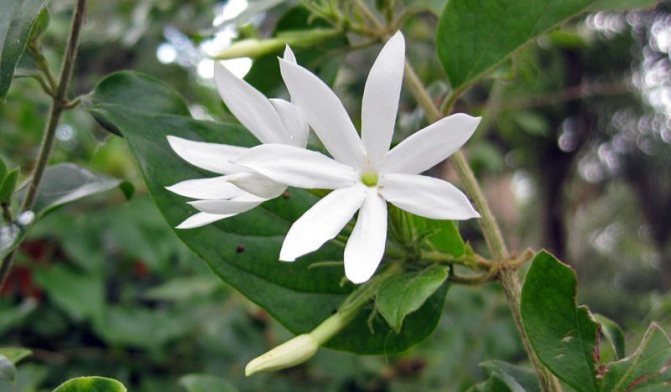

- Medicinal jasmine, which is a perennial vine. It has thin and long shoots, and the leaves are oblong-lanceolate. They are slightly darker at the top than at the bottom. White flowers on long peduncles are collected in umbrellas.
- Large-flowered... This is a liana that grows in nature up to 10 m. Its leaves are pinnate, elliptical, slightly pointed. It blooms from June to October with white flowers.
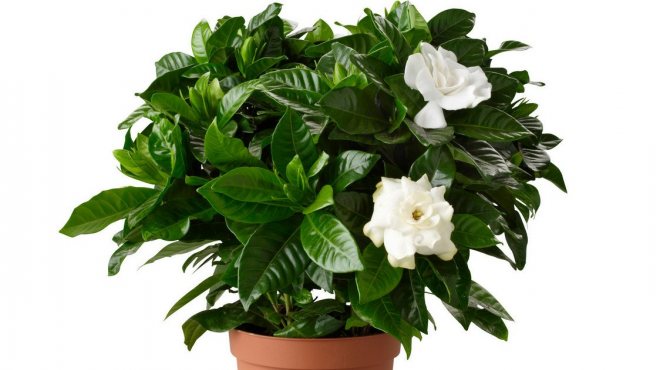

- Jasmine Bissa... This vine is special in that it belongs to evergreens. It grows up to 2 m. Shoots have grooves. Leaves are lanceolate, slightly pubescent, dark green, bright. It blooms in May, beautiful bright pink flowers grow 3 pieces in whorls located at the tops of the shoots. They have a very persistent aroma.
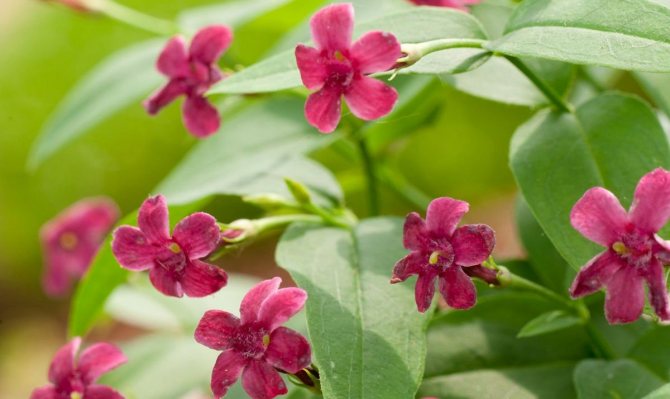

- Holoflower... It is a shrub with graceful, unbranched shoots and small, bright green leaves. It has very bright yellow flowers, located singly in the axils.
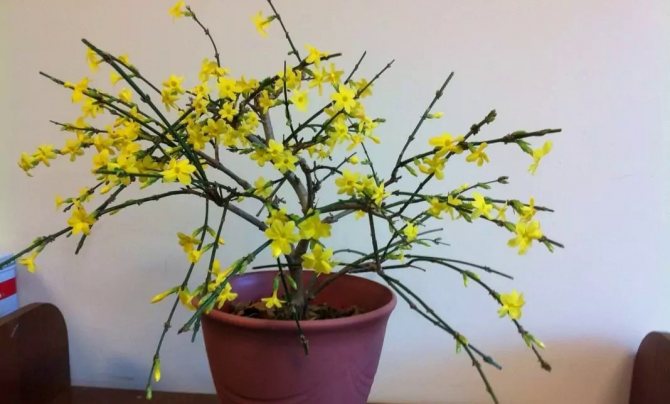

- Jasmine Sambac... The branches of this species are lignified, pubescent, in nature can reach 6 m. The leaves are ovoid, sometimes collected in whorls of 3 pieces. The cluster inflorescences are formed of 3-5 white flowers. They are slightly double, like roses or camellias, and have a very bright aroma. Sambac can bloom for a long time, from March to October.
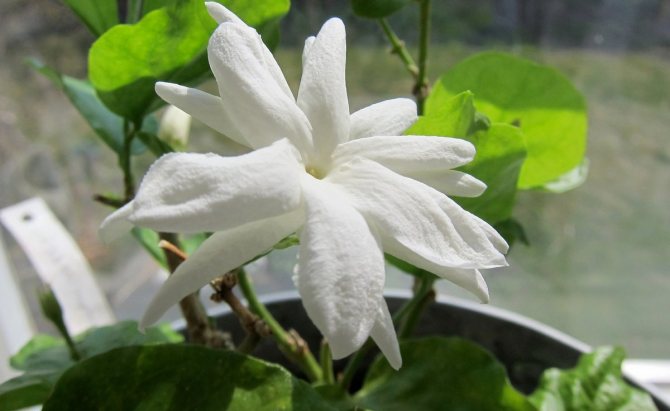

When and how much does jasmine bloom?
Depending on the species, the plant blooms at different times, from March to July. There are varieties that bloom all summer and part of spring. And there are also those whose flowering lasts 2-3 months. Winter jasmine blooms from late January to April. You can see this process for 2-4 years of growth.
With frequent top dressing and compliance with all the rules of care, flowering may occur earlier. Blooming jasmine will delight you with its appearance and aroma for 2-3 weeks... The inflorescences have a white, pink or yellow color.
The soil
For the successful cultivation of jasmine, there must be no lime in the soil. Neutral or slightly acidic soil is suitable.
Also, the earthen mixture should be nutritious and loose. You can use a commercial flowering soil mixture that contains peat.
You can prepare the composition yourself. To do this, mix leaf and turf soil, peat, humus, sand and coniferous soil in a ratio of 2: 2: 2: 2: 1: 1.
The optimum soil acidity for jasmine is 6.0 pH.
If we talk about purchased mixtures, then for jasmine sambac, a substrate for roses or begonias is suitable. For other species - 2/3 of one of the above mixtures and 1/3 of the substrate for azaleas.
Another option for self-preparation soil mixture: sheet, clay-sod soil, peat and sand in equal parts.
A good drainage layer should be laid on the bottom of the pot.
Flowering jasmine bush
Previously, this plant grew only in the southern regions of the country, but, thanks to the many years of work of breeders, now it feels great in other regions. Due to its beautiful flowering, shrub jasmine often used in landscape design.
The flowering jasmine bush, regardless of the variety, has a pleasant aroma.
To prevent the plant from wasting energy on something else besides flowering, you need to regularly monitor its branches and pinch if necessary.
Why does the shrub not bloom?
If it's time for flowering, but nothing happens, then this is an occasion to think about the correct care. Why doesn't jasmine bloom and what can be done to make the plant bloom?
Main reasons:
- Shrub height exceeded 3 meters. The optimal growth of the bush is 1-2 meters, so it is necessary to regularly prune shoots.
- Diseases, fungi or pests... They are manifested by spotting or drying out on the leaves. If signs are found, it is worth inspecting the near-stem circle of the plant, paying attention to the lower leaves. Having determined the reasons, you need to treat the jasmine using a fungicide or insecticide.
- Improper feeding... Excess nitrogen fertilization leads to doubleness and lack of flowering. In this case, you need to feed with superphosphate and potassium sulfate.
- Shadow. Jasmine prefers the sunny side without shading, except in a few varieties. You need to try to think over the landing site in advance.
- Stagnant water. It is important to choose an area with the smallest occurrence of surface water. Constant stagnation of water can also lead to plant diseases.
- Young shrub. As mentioned above, jasmine blooms from the age of two. The first years after planting, the plant gains strength and develops the root system.
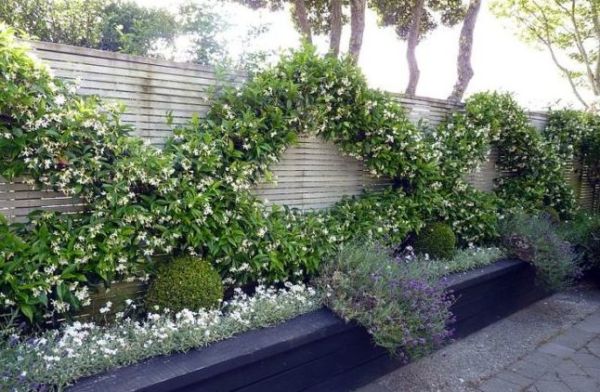

An example of the use of jasmine in landscape design
Other Potential Flowering Problems
Why amaryllis does not bloom at home - what to do
There is a risk of other problems when growing jasmine. So, the formed buds can crumble. In addition, there is a threat of the appearance of too small inflorescences.
Sprinkling buds
The following factors can lead to bud fall:
- too bright sun;
- damage to the bush by parasites;
- violation of the temperature regime;
- development of diseases.
Small flowers
Sometimes a situation arises when the buds are formed, but are too small in size. Most often this is due to insufficient soil fertilization. Planting jasmine in a shady place can also be a provoking factor.
Jasmine bloom at home
Experienced gardeners have home jasmine (Stefanotis) blooming throughout the year. At the time of flowering in the cold season, it is watered every 5 days, more often in summer. For long flowering, it is recommended to pinch the jasmine tops, leaving eight pairs of leaves on each branch.
Why does indoor jasmine not bloom?
If flowering does not occur, then the reasons may be as follows:
- Uncomfortable temperature in room. The optimum temperature is from +16 to +18. The limiting temperature in the room should not exceed +23. At temperatures below normal, jasmine does not bloom and loses its buds.
- Lack of moisture. It is necessary to carry out regular watering as the soil dries up, but do not allow the earthen coma to completely dry out. In case of dry air, it is recommended to humidify it.
- Shine. As with street jasmine, light is a necessary factor for a potted plant to bloom. He must be absent-minded. It is important to avoid direct sunlight. In the shade, the plant does not bloom at all.
- Calcareous or, conversely, acidic soil. It is possible to normalize the balance of the content of substances in the soil with fertilizers or liming. A small amount of dolomite flour or lime is suitable for liming.
- Planting depth. There are cases when, when transplanting a plant, the neck of the trunk is in the soil deeper than usual. In this case, you need to re-transplant the jasmine.
- Pests and diseases. It is necessary to carefully study the near-trunk plot of land, the back of the leaves, internodes and the trunk itself. If a cause is found, treat with the necessary pesticides.
Sometimes, in order to achieve the desired flowering, you have to completely change the methods of plant care, carry out a complete transplant or pruning of the stems.
Features of flowering plants
Jasmine - a flower for the garden, planting and caring for a shrub
Jasmine Sambac differs from other indoor plants for its abundant flowering in winter. Some varieties can bloom all year round. In order for the peduncles to form large and lush, in the summer you should not forget to feed the soil with minerals.
Important! To prevent buds and leaves from falling off, it is not recommended to spray jasmine during flowering and in the winter months.
In winter, the activity of the plant practically stops, the air temperature is lowered to + 15 ... +16 degrees. During the dormant period, with the help of artificial lighting, the daylight hours are extended to the flower.
The jasmine shrub can have different flower shapes:
- correct (one row of petals);
- terry (more than two rows of petals);
- semi-double (two rows).
Each peduncle is presented in the form of an elongated tube, on the edge of which corollas bloom, consisting of one or more rows of petals. After the ovary ripens, a berry appears in its place.
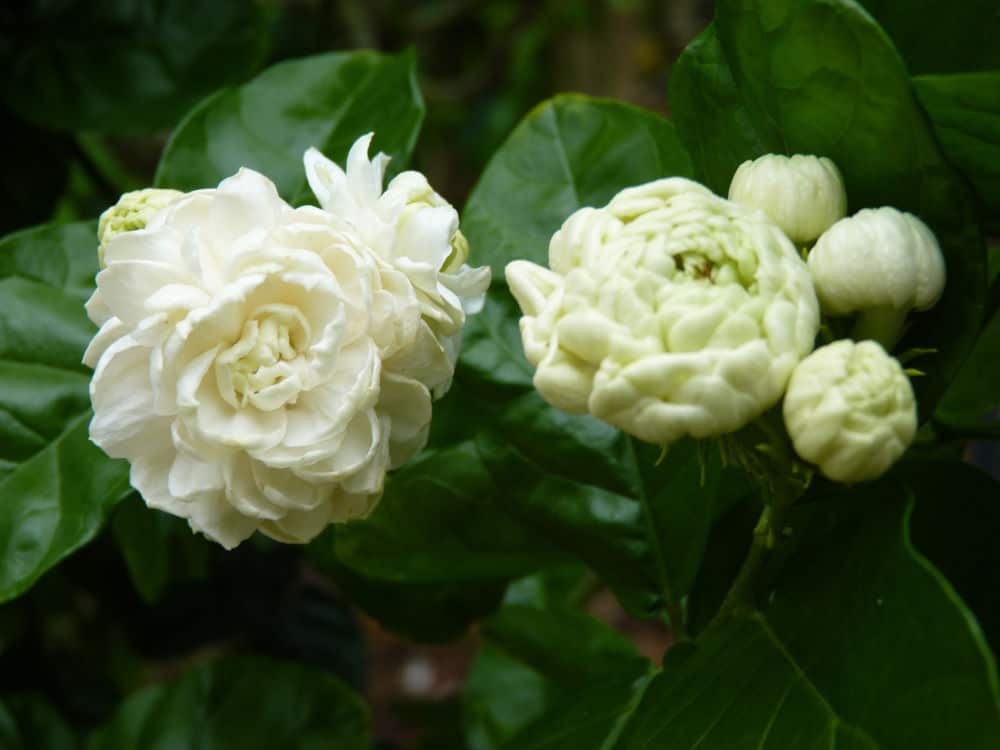

Terry jasmine
It is interesting! The most terry jasmine variety is Sambaca Grand Duke. Its rather large inflorescences (4-5 cm in diameter) outwardly resemble miniature roses. The plant produces up to 15 inflorescences at the tips of the shoots. The spectacle is mesmerizing, while the house is filled with a strong aroma. Jasmine blooms when the sun goes down.
Home care
Home care description:
- The soil. Before planting, you need to properly prepare the ground. In a ratio of 1: 3, it is necessary to mix sand, deciduous and clay-leaf soil. Add some peat if desired.
- Lime-free... You can use acidified water, settled for a day, for irrigation. It is important not to overflow the plant.
- During the warm season the plant can be displayed on the balcony, shading a little. In warm regions, planting in open ground is recommended. During this period, it is important to regularly spray the jasmine leaves.
- Maintaining the temperature regime. The temperature should not exceed +23 and fall below +16.
- Fertilizers. It is necessary to regularly feed the plant in the spring and summer, but not more often than once every 14 days.
- Watering. It is important to carefully monitor the moisture content of the soil, to prevent stagnation of water or drying out of the earthy coma. Watering is carried out several times a week, as the soil dries out. In winter, the frequency is reduced.
- Pruning shoots. For even and timely flowering, pruning is a prerequisite. First of all, dried areas are removed, and then naked and long shoots are cut off.
- Shine. Jasmine will not bloom in a dark room. If it is not possible to put the plant closer to the window, then it is enough to move it higher to the source of room lighting.
General information about the flower
In indoor conditions, some types of lashes can reach a length of 3 m and need support, therefore they are curled on a ladder, a lattice or an arc, sometimes a figure-eight support is used.
• Multiflorous jasmine (polyantum) - most common in indoor culture. It is grown in the form of a liana and an ampelous plant. Leaves are opposite, pinnate. When blooming, many white fragrant star-shaped flowers are formed. The flower clusters contain from 5 to 50 flowers.
• Sambac (Arabian, Arabian jasmine) - liana, reaching a length of 3 m. Large leathery shiny ovoid leaves are arranged opposite each other. Fragrant flowers collected in umbrellas can be simple, semi-double and double.
• Large-flowered jasmine is a climbing shrub with thin long branches. Leaves are pinnate, two- and three-paired. Large white flowers have an elongated tube shape, blossoming along the edges. The calyx is about 1 cm in size. Flowers are collected in umbrellas.
In early spring, so that the bush begins to grow intensively, it is recommended to prune it. After pruning, additional side branches will begin to form, on which fragrant flowers will soon appear and bloom. The bush will turn out to be lush and beautiful.
The pruning procedure takes place in early or mid-March. All shoots on the bush are shortened by 40-60% of the length. Poorly developed, damaged, elongated and dry shoots are removed completely.
In order for a young plant to bush and develop better, it is recommended to pinch its shoots from spring to autumn every month. The branches should remain 50-60 cm long.
1. Sabak requires cutting branches 2 or 3 times a year. Its shoots are cut off quite a bit.
2. Powerfully growing shrubs, branches of which grow more than a meter in length during the season, are cut off both after flowering and before the start of active growth.
3. Jasmines blooming in winter are pruned at the beginning of the growing season in autumn.
You can propagate a jasmine bush by layering and cuttings. The easiest and most convenient way is to propagate by layering. But cuttings are more productive, however, it requires certain knowledge and experience.
1. Make a small incision on the extreme shoot.
2. Dig in the shoot in the place of the cut into the hole and cover it with earth.
3. The place where the branch is dug should be watered regularly.
4. In autumn or spring, when the young growth comes, the cuttings are separated from the bush and planted in a separate pot.
After cutting the bush, the remaining cuttings can not be thrown away, but used to propagate jasmine. In summer, young green shoots can be used for cuttings.
1. At a powerful mature shoot, the top with two internodes is cut off. The bottom cut is made at an acute angle. The length of the cutting should be 10 to 14 cm.
2. Prepared cuttings are planted in a container with wet sand or a mixture of peat and sand (1: 1). They are dug in to a depth of 1.5-2 cm. The container is closed from above with glass or polyethylene. The petioles can be simply put in water at first, and when they give roots, they can be planted in a nutritious soil.
3. Cuttings should be ventilated and sprayed every day. Roots most often appear after about a month. Young plants are planted in separate containers with a diameter of 3-5 cm. The soil for them should consist of peat or leafy soil and sand (3: 1). You can use potting mix from the store.
4. Plants are exhibited in a well-lit place without direct sunlight. It is necessary to ensure that the soil is wet at all times. For this, daily spraying will be sufficient.
5. When the roots grow and it will be seen that they have braided the entire substrate, the young bush is transplanted into a pot with a diameter of 8-10 cm.
Propagated by cuttings, jasmine up to three or four years of age is transplanted into a new pot a little larger than the previous one every year.
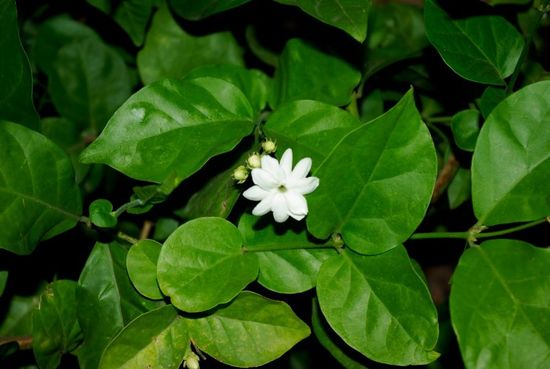

• the room temperature is too low or, conversely, too high;
Jasmine does not have enough lighting for flowering;
· Direct sunlight falls on the bush, as a result of which its leaves get burned, and the buds dry out and fall off;
· The earthen lump dries up all the time and the plant does not have enough moisture for the growth and development of buds;
· In excess amount in water, which means that lime is present in the soil;
The flower has not been fed for a long time, therefore, it lacks nutrients for flowering;
· The neck of the trunk when planting the plant was deepened by more than 3 cm;
· The bush is infected with pests or is sick.
After reviewing the care and correcting mistakes, you will definitely wait for the buds to bloom on the jasmine bush. However, it is not recommended to put a jasmine pot in the bedroom. The scent of its flowers can give you a headache. It is best if a beautiful flower becomes a decoration of the kitchen or living room.
Jasmine attracts with a heady aroma and radiance of petals. But sometimes, no matter how hard the caring owner tries to take care of his flower garden, indoor jasmine does not bloom, withers away. Why is this happening?
The reason for this is one of the factors or their combination:
- Violation of the thermal regime. If the temperature in the room is above 24 degrees or below 14, lush flowering cannot be achieved. The buds will either fall off immediately after the ovary, or they will not be able to set at all. To avoid such moments, restore the required temperature to 15-22 degrees. Based on the specific case, you will either need to shade the plant from excessive light and move it away from the heating appliances, or, conversely, put it closer to the sun.
- Lack of moisture. Jasmine dries up, its leaves begin to curl, deform and fall off. You will need more frequent, but not too intense watering (in summer after 1-2 days, in winter twice a week is enough) and humidification of the air. Do not spray the leaves.
- It happens that buds appeared on the bush, but later fell off. The florist is tormented by the question of what happened to his jasmine, and it was only worthwhile to increase the lighting. The first buds form at the end of winter. During this period, it is transferred to a warmer and brighter place. At the same time, you should not put the jasmine pot directly on the windowsill above the central heating battery, otherwise you will not be able to enjoy the fragrant bloom. Place the flowerpot in a well-lit room with diffused light, watch out for the soil - it should not dry out. Spray the air around the jasmine with water every 2-3 days and soon you will be able to enjoy flowering.
- Hard water. If you use tap water for irrigation, then you shouldn't be surprised why there is no flowering so far. A way out of the situation is to defend water for irrigation for at least 2 hours or use rainwater. Filtration of water will do nothing.
- Soil acidity. Jasmine can grow beautifully, reach gorgeous sizes, but never bloom just because the soil in which it grows is completely unsuitable for this. This shrub does not like neutral and alkaline soils. Transplant your jasmine into a different soil mixture: mix turf, sand and leafy humus (3/1/1) or purchase a special acidic soil from a phyto-store.
- Incorrect fit. If the neck of the trunk is more than 3 cm deep in the soil, there will be no flowers on the jasmine. Transplant your flower so that the section of the trunk where the roots of the plant begin is on the surface.
The correct regime is necessary not only for the luxurious flowering of jasmine. These are important conditions for plant life, including growth and development.
It is very convenient to grow plants at home that have not only a wonderful decorative appearance, a delicate aroma, but also have a number of useful qualities. If you want to become the owner of such a valuable species, plant a jasmine.
The plant belonging to the Olive family grows in natural conditions in the form of a shrub or liana.
Beautiful white star-shaped flowers in many countries are used to decorate a bride's bouquet, hence another name - a wedding flower.
Location
This plant needs light bright, but diffused. Southeast or southwest facing windows will do.
When grown on southern windows at midday, protection from direct rays in the form of a translucent cloth or paper is required. On the northern windows, due to a lack of lighting, jasmine may not bloom.
Indoor jasmine needs space; a narrow window sill will not work for growing. During flowering, the aroma spreads, so it is better for allergy sufferers not to sleep in the room where the flower pot is.
The plant should be exposed to the window on one side, in a strictly defined position, otherwise flowers may fall off.
When the jasmine blooms, the pot cannot be turned, rearranged from place to place, otherwise the buds will immediately disappear. A new location can be picked up after flowering, when the plant is dormant.
In winter, it is difficult to find a cool place in the apartment. As a rule, a pot with a flower is placed on a window, which is regularly opened for airing - indoor jasmine needs an influx of fresh air.
At the same time, he is afraid of drafts, therefore, when the window is open, it should be covered with paper or cardboard.
Temperature
In summer, jasmine needs room temperature, on average 22-25 ° C, without overheating.
In winter, a comfortable, cool temperature not exceeding 18 ° C is required, which promotes the formation of flower buds.
Bloom
With good care, jasmine blooms for about 3-4 months, sometimes twice a year. One inflorescence contains 7-9 flowers, emitting a light pleasant scent of jasmine.
Jasmine blooms on old twigs. In spring and summer, it gives young shoots. They need to be cut, otherwise the plant will spend energy on new shoots, and not on the formation of peduncles.
Faded flower stalks are removed so that the jasmine directs energy to the formation of new stems.
Jasmine loves moisture, so in the summer it is watered 2-3 times a week, especially abundantly during flowering. In winter, once a week is enough - moderate watering stimulates more abundant flowering.
Shrub Jasmine Care
In leaving, the following rules must be observed:
- Place and time of boarding. The plant is planted in open ground in late spring or early autumn. Jasmine has been growing in one place for at least 10 years, so it is very important to seriously approach the issue of its choice. The place should not be located in a low area where water can stagnate. The plant tolerates shade well, but prefers the sunny side.
- The soil. Grows on any type of soil. It is necessary to plant bushes not for the first year of life during the period when the jasmine does not bloom. The pit should be cylindrical, depth - 0.5-0.7 m, diameter - 0.6 m.In the case of low porosity of the soil, the ground at the bottom of the pit is loosened, if vice versa, then drainage is made of stones or sand with a depth of 15-20 see Soil - a mixture of ash, humus and black soil in a ratio of 1 kg: 1 bucket: 1 kg, respectively. After planting, it is important to ensure that the root collar is at ground level, otherwise it may rot. Once every two weeks, the soil must be loosened.
- Watering and humidity. Watering the plant loves abundant (30 l per 1 sq. M) and regular. It is necessary to ensure that the soil around the bush does not dry out. There will be little pouring rain to saturate the plant, so even after precipitation it is worthwhile to carry out light watering.
- Top dressing. Top dressing is carried out in the spring. In the early years, fertilized with slurry diluted with water in a ratio of 1:10. After 2 years, mineral fertilizers are also included in the top dressing.In May, 15 g of urea + 15 g of potassium sulfate + 30 g of superphosphate + 10 l of water are introduced, and at the end of summer 100-150 g of ash.
- Temperature. The temperature from +8 to +25 is considered the norm. In order for the plant to calmly endure the cold in winter, it is necessary to cover its roots with cloth or sawdust.
Shrub pruning
- Formative pruning need to carry out every year at the end of April-beginning of May, but very carefully, otherwise the bush may bloom only next year. The strong branches should be pruned first. Then, after flowering, it is necessary to cut off the weak, diseased and shading branches. Faded inflorescences are regularly removed.
- Anti-aging pruning tothe mouth is carried out every 3-4 years, by completely removing old shoots.Several healthy trunks are shortened by 30-40 cm, and the rest are cut down completely. The soil is fertilized with compost, and the cuts are treated with garden pitch. All subsequent summer, abundant watering and regular feeding with mullein infusion are carried out. In the spring, you need to leave the three strongest shoots, and cut the rest to the base.
Reproduction
At home, jasmine is propagated only by vegetative methods, since when planting seeds, the plant develops very slowly, there is a risk of its death. The most effective methods are cuttings and propagation by layers.
Cuttings
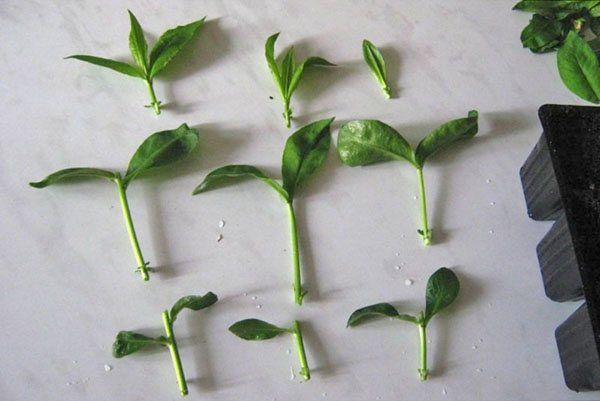

The preparation of planting material is carried out in spring or summer. It is best to take cuttings from an adult plant from 2 years old. The optimal length of the cutting is 10-15 cm; it must have at least 3 internodes. For summer cuttings, young green twigs are used, which root best.
The planting material is placed in a prepared substrate of peat, sand and leafy earth in equal proportions, deepening it by 3-4 cm.After that, the seedling should be watered abundantly with water with the addition of a growth stimulator and placed in a warm place with a temperature of at least 20 ° C. Rooting occurs after 1-1.5 months, after which the young plant can be planted in a permanent place. The first transplant into a spacious pot is carried out only the next year.
Reproduction by layering
The procedure is carried out only in early spring before the active vegetation of jasmine begins. To do this, next to an adult plant, you need to put a container with prepared soil, and on a healthy and strong shoot, make a small incision in the bark for rooting.
The cut is instilled into the ground in such a way that 2-3 leaves remain on the surface; for reliability, the twig must be attached with a hairpin. Rooting takes 3-5 months, so in the fall, the layers can be separated from the mother plant with the help of a pruner and transplanted to a permanent place.
Pests and diseases
As a rule, insect attacks suffer less odorous varieties of jasmine. The strong smell of the plant repels various pests, but with improper care and non-compliance with the regime, diseases may still begin to develop or various pests may appear.
Falling leaves or changing their shape speaks, as a rule, of a lack of moisture or an excess of sunlight. Jasmine rarely gets sick. This usually happens when the rules for caring for the plant are not followed.
Table: Jasmine Pest Insects
| Insect pest | Description and what to do? |
| Description: Twisted, yellow and fallen leaves; dark spots on the leaves; dried tops of the shoots; falling flowers or buds. What to do: Plant near repellents (calendula, marigolds). Plant under the bush crops that attract insects that feed on aphids (dill). Sprinkle ash on the near-stem circle, water the soil with hot water or dig up to destroy the eggs of aphids. Spray with soapy water. Biological products - Inta-vir, Bio Spark, Jaguar, Arrow. Insecticides - Iskra, Karbaphos, Aktara, Aktellik. |
| Description: In appearance, the egg-laying resembles white lumps on the plant.The insect leaves behind a sticky coating. What to do: Wash off all the lumps with a soap-alcohol solution (1 tsp of soap: 1 l of water: 2 tablespoons of vodka). Treat with insecticides (Gold Spark, Fufanon, Fitoverm, Metaphos, Aktara, Karbofos, Fosfamid, Metaphos, Mospilan). Spray both the leaves and water the ground under the plant. The treatment is carried out repeatedly (once every 4 days) and with different preparations. |
| Description: Dots all over the plant; yellowed and withered leaves; sticky spots on the back of the sheet; cobwebs all over the plant. Jasmine infested with spider mites does not bloom. It is almost impossible to notice the insect itself due to its small size. What to do: Remove all damaged leaves. Put a cotton swab soaked in onion or garlic juice in a pot, then cover the plant with cellophane for several days; Treat with soapy water. Spray with biological products Akarin, Bitoxibacillin or Fitoverm. Acaricides - it is important to alternate between different drugs. |
| Description: This insect loves to attach itself to the underside of leaves, hiding under a wax shield that is not easy to remove. What to do: Remove all pests from the plant. Treat all jasmine with soapy water. |
| Description: Greenish larvae on the underside of the leaf and white midges above the plant. With this pest, the leaves curl, turn yellow and fall off. What to do: Remove affected leaves. Treat with insecticide. |
Watering
Jasmine is a moisture-loving vine that can die due to the drying out of an earthen coma. In summer, jasmine needs to be watered abundantly., but between waterings, the topsoil should dry out.
In extreme heat, they are watered more often so that the plant does not suffer from a lack of moisture. Watering is carried out with warm rain or snow water.
Water less often in winter, as in a cool room, the roots of the plant may begin to rot. But even in winter, the soil in the pot must remain moist.
Jasmine grows very poorly in an alkaline environment, it develops poorly and blooms poorly. To avoid this, it is recommended to use slightly acidified water for irrigation 1-2 times a month. To do this, add 3-4 drops of lemon juice or 1-2 crystals of citric acid to 1 liter of water.
The transition to moderate watering in winter should be gradual. Both drying out and waterlogging of the substrate are detrimental to the plant. Therefore, soil moisture must be regulated.
Using jasmine
- Medicine. Jasmine is actively used in folk medicine for the manufacture of medicines. The flowers of the plant help in the treatment of problems related to digestion, circulation and metabolism. They are used in the treatment of serious diseases of the liver and uterus.
- Essential oils. The flowers of the plant are used to make essential oils. These oils often act as an aphrodisiac. Jasmine essential oil is often found in dietary supplements.
- Tea. Jasmine tea is famous all over the world. It relieves nervous tension and improves mood.
- Cooking. Jasmine petals are added to drinks and desserts, as they have a pleasant aroma and taste. In Europe, jasmine leaves are used as a salad dressing. Crushed jasmine flowers are even used to make ice cream.
- Floristics. Indoor jasmine or Stefanotis can often be found in bridal bouquets. Its flowers have a delicate aroma and incredible durability. Due to the short length of the stems, since it blooms on curly branches, the flowers are attached to pins.
- Landscaping. Due to its beautiful shrub shape and abundant flowering, jasmine can often be seen in landscaping. Usually, several varieties are used to decorate the site, so that it seems that the garden is blooming all summer.
Health benefits of jasmine flower tea
Jasmine flower tea is distinguished by its exquisite taste and aroma.
The benefits of this tea are as follows:
- cheerfulness, due to the content of caffeine in tea in its light form;
- good mood;
- active work of the brain;
- increasing reproductive function and sexuality in women;
- improving performance;
- prevention of oncological diseases;
- getting rid of insomnia;
- tea removes excess cholesterol in the blood;
- helps a speedy recovery from a cold;
- normalizes blood pressure;
- jasmine flowers help to lose weight and eliminate toxins from the body.
Jasmine is harvested from July to October, while it blooms.
Then the flowers are dried in the oven or naturally. After complete drying, the flowers are crushed and mixed with tea leaves. It is worth letting the tea soak in the aroma for a few days, and then you can brew it.
To create green jasmine tea, the varieties Hua Zhen, Jasmine Dragon Pearl, Jasmine White Monkey, Jasmine Jade Butterfly, Green Jasmine, Jasmine Sambac are used.
Trim / Support / Garter
Let's take a look at how to prune jasmine. In order for the plant to look lush and compact, it must be pruned annually. Jasmine pruning is carried out in the spring, at the beginning of March.
It is important to prune the plant before the start of its growing season.so that the wounds have time to heal and lateral shoots begin to actively grow.
The longest shoots of the plant are shortened by half, the less overgrown by a third. All thin, weak and elongated lashes are cut out. The plant tolerates pruning well and grows back quickly after it.
In addition to pruning, pinching of the tops of the shoots is carried out. Pinch young, not overgrown vines to stimulate branching. On adult bushes, actively growing shoots are selectively pinched. This can be done during the entire growing season.
Is there any harm from jasmine?
Jasmine has not only beneficial qualities, but can also be harmful.
The plant in any form is contraindicated in pregnancy, high blood pressure or peptic ulcer disease.
The shrub also has a number of harmful qualities:
- allergy - more often the reaction occurs after consuming a decoction of pure jasmine flowers;
- headaches appear due to excessive consumption of jasmine tea;
- virulence - the juice of the root of Yellow Jasmine is a strong poison that affects the human nervous system.
Many varieties of jasmine produce juice that is also poisonous, but less dangerous. Therefore, when working with a plant, it is better always wear gloves.
Lighting
Indoor jasmine - light-loving plant, but the direct summer sun can leave burns on its leaves. Therefore, for a flower, you need to choose a place where the sun's rays will not fall on it for more than 1-2 hours a day.
The rest of the time, the plant should be in diffused lighting.
In winter, jasmine is transferred to a brighter place: the winter sun cannot damage the plant. During the cold season, jasmine requires bright lighting.
The most comfortable location for indoor jasmine is west or east facing windows. Here the plant will receive a sufficient amount of light, and at the same time it will be safe from the scorching rays of the sun. If the flower is on the southern windowsill, it will need shading, which can be organized using a translucent curtain.
Shaded or artificial lighting is not suitable for jasmine.
Loading ...
Interesting facts about jasmine
- They say that the white flowers of this plant symbolize purity and innocence, so it is customary to give jasmine to newlyweds.
- Keeping jasmine branches at home is a bad omen.
- The name of the flower "Jasmine" is translated from Persian as a fragrant flower.
- In Christianity, this plant is considered the flower of the Virgin Mary.
- In Thailand, jasmine is a symbol of the mother.
- Tatar belief says that in order to get to heaven, you need to grow jasmine during your lifetime.
- About 7% of high quality perfumes produced worldwide contain jasmine oil.
- An interesting sign from the dream book: if a blooming jasmine is dreaming, then this is for the fulfillment of desires or pleasant romantic changes in life.
Jasmine will decorate any apartment, garden, cottage or front garden in the village. To preserve this beauty, you need to carefully choose the place, variety and time of planting the shrub, follow all the instructions for caring for the plant.
Rate the article:
Symptoms of the appearance of pests, methods of control
Like any plant, jasmine can infect diseases or parasites. To maintain the health of the flower, unfavorable sources should be eliminated.
Whiteflies, symptoms
Whiteflies drink the sap of the plant and leave a sugar coating. The leaves curl up and later dry up and fall off. Small white insects are visually noted.
Decision
For processing, use ready-made preparations Akellik, Agravertin or Intavir, which are diluted according to the instructions (usually 1 ml per 0.5 l of water).
Tick, symptoms
When attacked by a red tick, leaves are also affected. Parasites leave behind whitish particles.
Decision
The mites are removed by treatment with soapy water. If the parasites have not disappeared after the procedure, spraying with 0.15% Actellik solution is carried out 2 times a week.
Green leaf weevil, symptoms
The parasite larvae colonize the leaves and suck the cell sap. If you do not process the plant, the whole bush dries up.
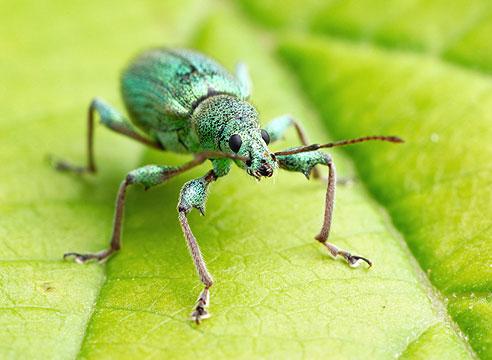

Decision
Insecticide treatment (Actellik, Intavir).
Indoor aphid, symptoms
Indoor jasmine is also affected by pests. If a cobweb has formed on the flower, then aphid infection has occurred. Due to the disease, growth slows down, and in the future, complete drying is possible.
Preparing for winter
Its further growth and flowering depends on how wintering takes place. Jasmine tolerates cold well, so you don't need to dig it out for the winter.
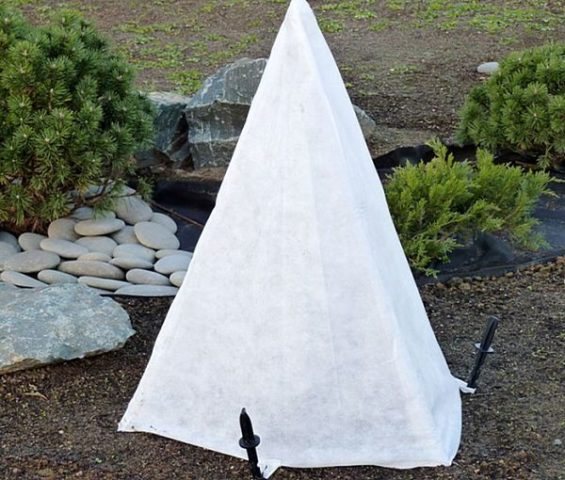

Covering the bush for the winter instead of digging up is the right decision
Before the onset of severe frosts, the plant harbor and hibernate under the snow until spring. For shelter, sawdust, spruce branches or spruce branches are used. After winter, the shrub is trimmed and the frozen branches are removed.

